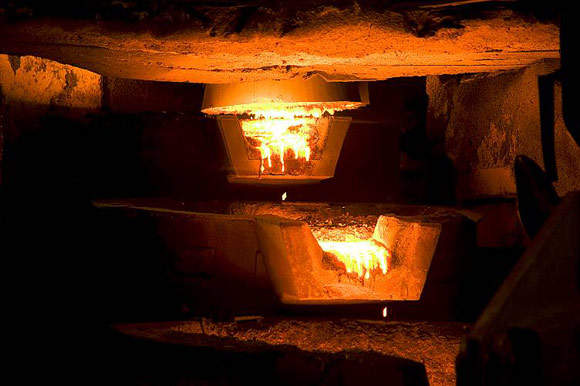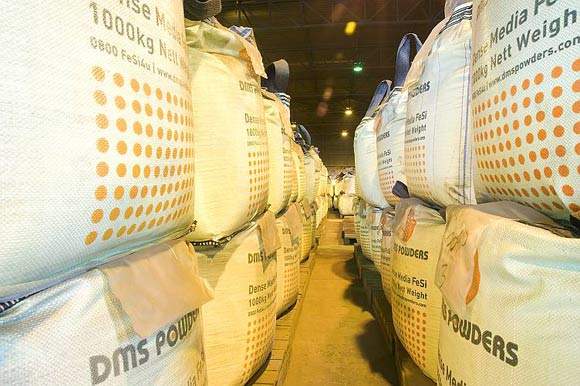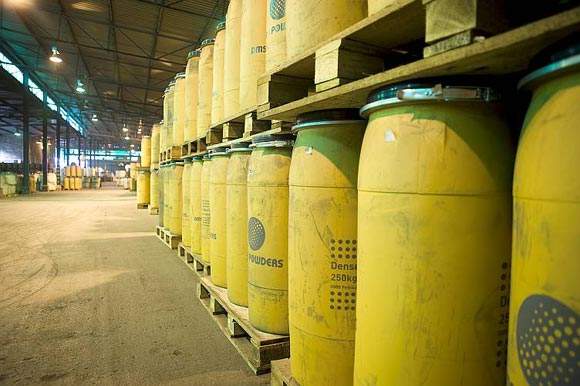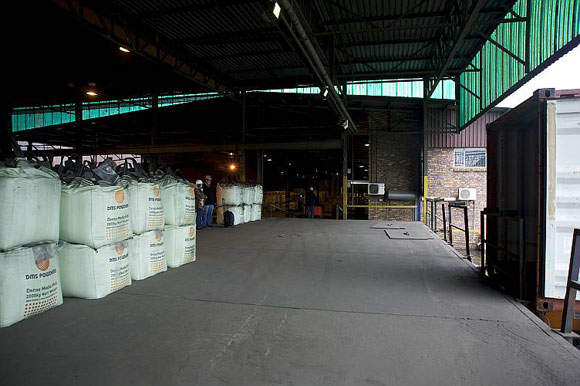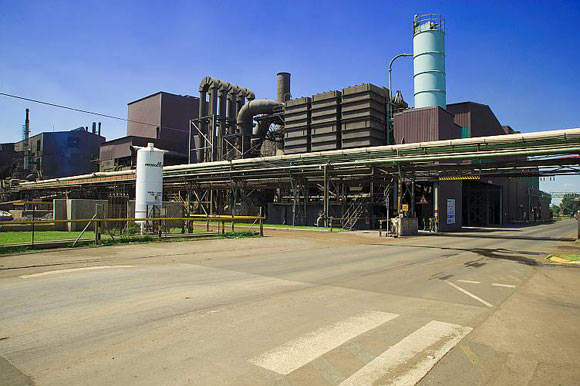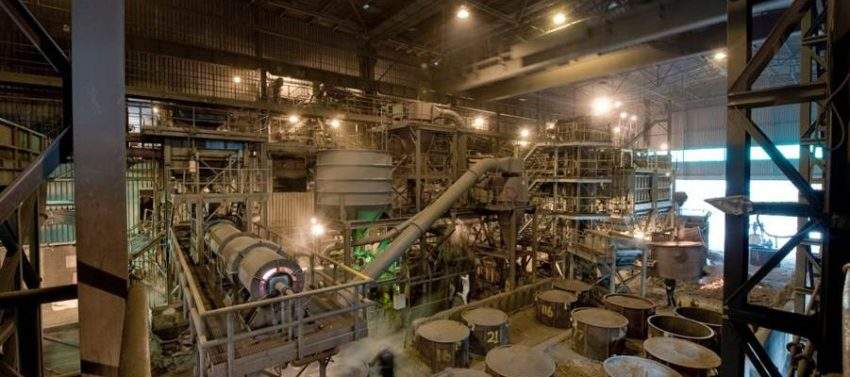
DMS Powders is the leading supplier of both milled and atomised dense-media ferrosilicon. Our consistently high-quality ferrosilicon ensures maximum separation efficiency and media recoverability.
Powders for diamond recovery, iron ore, scrap-metal recycling and manganese ore
DMS Powders has been a supplier of dense-media ferrosilicon since 1949. Our powders have been developed specifically to maximise diamond recovery at the lowest possible cost. Today, our products are used in a broad range of industries varying from diamonds to iron ore, scrap-metal recycling to manganese ore. DMS Powders manufactures a wide range of products to suit any dense-media application.
Dense-media ferrosilicon powders
Modern dense-medium plants use ferrosilicon powders mixed with water to act as an artificial heavy liquid or medium, in which mineral particles separate in a sink-float process. The relative density of our powders is 6.7-7.1, and they contain 14%-16% silicon and 80% iron.
Our powders are designed to enable maximum separation efficiency, while ensuring:
- Corrosion resistance
- Abrasion resistance
- Magnetic properties for maximum recovery and demagnetisation
The consistent quality of our ferrosilicon, which is controlled in a narrow specification range, allows the DMS plant operator to improve control of the separation efficiency, thereby maximising revenue output from the DMS process. In addition, the variable cost of the dense-medium separation plant can be reduced as the quality of the ferrosilicon is consistent, enabling optimal process control. DMS powders are manufactured for both atomised and milled ferrosilicon.
Atomised ferrosilicon
Atomised ferrosilicon is produced in an induction furnace by melting 75% FeSi with steel. There molten alloy is atomised, dried and screen-classified into the various grades. Atomised ferrosilicon is spherical and therefore can be used in operations where the operating densities are above 3.0RD.
Atomised grades may also be appropriate where corrosive conditions or highly porous ores (leading to high losses) may be suspected.
Milled ferrosilicon
Milled ferrosilicon is produced in a submerged arc furnace using steel, quartz and reductants. It is subsequently water-granulated, dried, milled and air-classified into various grades. Milled ferrosilicon is more angular in shape and is therefore more suitable for use where operating densities are below 3.0 RD.
Medium properties (FeSi and water suspension)
The medium’s important properties (or heavy-liquid suspension) are density, viscosity and stability. These properties are interrelated and determined by the physical properties of the ferrosilicon powder, such as particle shape and particle size distribution.
Medium density
The medium’s density is controlled by the proportion of ferrosilicon solids present in the medium. It is increased by adding more ferrosilicon, and reduced by adding water. A high medium-density results from:
- A high concentration of medium solids
- A high absolute density of medium solids (FeSi with RD 6.8 will always produce a higher medium density at the same concentration than magnetite with RD 4.5)
Medium viscosity
Medium viscosity is the medium’s resistance to flow – its consistency. It is determined by the concentration, shape and size distribution of the FeSi solids making up the medium, as well as fine contaminants from the ore being treated.
In general, high medium-viscosity is undesirable since it reduces the velocity of the mineral particles being separated, thereby increasing the chance of particle misplacement and consequently reducing separation efficiency.
Medium stability
Medium stability is the tendency of the medium solids to settle out. All conventional dense media are inherently unstable since the solids (FeSi) have a higher density than the liquid in which they are suspended (water). The reciprocal of the rate at which the medium solids settle out under gravity is a measure of the stability.
Stability is important in determining the behaviour of the medium in the separator, impacting on separation efficiency.


